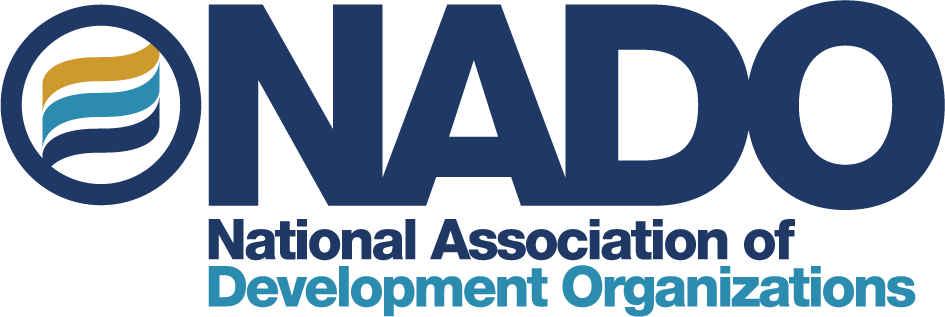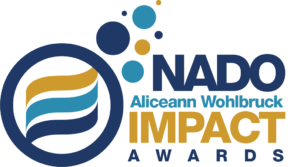Under the State of Washington’s Regional Competitive Program, Surface Transportation Program (STP) regional funds must be allocated based on regional priorities. Metropolitan planning organizations (MPOs), regional transportation planning organizations (called RTPOs in Washington) and other approved entities have the authority to select regional projects and distribute STP regional funds. MPOs and RTPOs are tasked with developing selection criteria and application procedures based on regional priorities, and selecting and funding projects through a competitive process based on those criteria. Projects must meet basic federal and state eligibility requirements, and the Washington State Department of Transportation (WSDOT) provides guidance on goals and priorities to assist MPOs and RTPOs with the development of selection criteria; however, regional entities are entirely autonomous, and criteria are determined exclusively at the regional level. (8, 9)
The Yakima Valley Conference of Governments (YVCOG) serves as the MPO and the RTPO for the Yakima Valley region, located in south central Washington. Prior to 2006, YVCOG distributed a portion of the STP regional funds per a formula based on population and the remainder was distributed using a competitive process. Under this model, jurisdictions received regular funding regardless of need, and it took a number of years for them to accumulate adequate funds to fully fund an eligible improvement project. In 2006, under federal and state guidance, YVCOG revised its regional project prioritization criteria and STP regional funds application. According to Deb LaCombe, Senior Transportation Planner for YVCOG, the new process “gets shovels in and projects done faster.” (10)
YVCOG’s Technical Advisory Committee (TAC)—which includes the public works director (or their designee) of each of YVCOG’s 15 member jurisdictions, Yakama Nation tribal staff, transit representatives, and two non-voting WSDOT representatives—was tasked with establishing selection criteria and developing the new STP regional funds application in 2006. The selection process is not stagnant; every year, the TAC reexamines selection criteria and revises the application to meet current regional needs so that they “actively change as the times change,” according to LaCombe.
The 2010 – 2011 funding cycle selection criteria and application, for example, were revised to emphasize projects that were “shovel ready” and which created jobs for the region. One change to the application to address this priority was the addition of a new category to credit projects for money already invested by the sponsoring agency: the “Non-match Project Funding Investments” category awarded points to projects for which pre-engineering or environmental assessments had already been completed. In addition, over time, the selection criteria and application are increasingly based on quantitative measurements and less narrative-based. This approach, says LaCombe, removes a great deal of subjectivity from the process.
To a certain degree, the community is involved in the TAC’s selection criteria and application development process through two local coalitions: Driving Rural Yakima Valley’s Economy (DRYVE) and TRANS-Action. DRYVE is a coalition of agency officials, government officials, businesses, chambers of commerce, tourism and agricultural organizations and the general public that focuses on the aspects of rural transportation, economic development, jobs and ag-tourism in the lower Yakima Valley region. TRANS-Action is a coalition of agency officials, government officials, private sector, and real estate professionals which focuses on urban transportation issues and market needs in the upper Valley, metropolitan area. In the past, these organizations have brought their priorities to the TAC for consideration in the development of selection criteria and STP regional applications.
The 2010 – 2011 funding cycle application included nine weighted categories, seven of which related to project details, and two of which related to funding sources. A brief explanation of each of the nine categories, and the maximum number of points available in each category follows. A total of 100 points were possible. (11)
- Traffic Volume (12 points maximum): Projects receive points on a scale measuring the current average annualized daily traffic (AADT) for a roadway. Two scales are provided: one for cities with a population over and one for cities with a population under 10,000 persons.
- Freight Mobility (20 points maximum): Projects receive points on a scale based on the WSDOT Freight and Goods Transportation System which classifies roadways according to the average annual gross truck tonnage they carry to establish which roadways are most heavily used by trucks.
- Roadside Hazards (5 points maximum): Projects receive one point for each roadside hazard corrected or eliminated.
- Collision Rate (12 points maximum): Projects receive points on a scale measuring the current collision rate.
- Alternative Modes (9 points maximum): Projects receive points if they facilitate alternative transportation modes. Cities with a population over 10,000 receive two points per alternative mode, and cities with a population under 10,000 receive three points per alternative mode.
- Existing Surface Condition (10 points maximum): Projects received points on a scale measuring the existing surface conditions of the roadway.
- Roadway Width Deficiency (12 points maximum): Projects receive points on a scale measuring the deficiency of the roadway’s width from specified standards, based on its classification.
- Excess Funding Match (10 points maximum): STP regional funds require a 13.5 percent local match. Projects receive one point for each one percent match over the 13.5 percent requirement.
- Non-match Funding Investment (10 points maximum): Projects receive points for money invested in a project, but which cannot be classified as a matching contribution.
Although the selection criteria and STP regional application is reviewed and modified periodically to reflect current priorities, the application process is more established. When new STP funding amounts are disclosed, customarily on a yearly basis, YVCOG issues a Call for Projects to all MPO/RTPO member jurisdictions. YVCOG staff reviews all applications to determine if they are complete and if the applicant is eligible to receive STP regional funding. For example, in order to be eligible, roadways must be functionally classified, at a minimum, as a minor collector in rural areas and a collector in urban areas, and projects must be included in the jurisdictions’ transportation improvement program (TIP). Complete applications are referred to the TAC for evaluation and ranking based on regional criteria. A TAC sub-committee scores and ranks all applications. Then, the full TAC votes on and forwards recommendations to the MPO/RTPO Executive Committee for a final decision concerning the projects to be awarded funding.
Using the above process, in the 2010 – 2011 funding cycle, the Yakima Valley MPO/RTPO identified eight projects for STP regional funding totaling $5.75 million. The projects are located throughout the Yakima Valley region in seven discrete jurisdictions, and are located in urban (MPO) and rural (RTPO) areas alike. Next funding cycle, the application may look completely different. “The entire process can change every time,” says LaCombe. Because of the TAC’s ability to revisit selection criteria, “It really shows during every funding cycle where the priorities are.”
For more information, visit www.yvcog.org.


